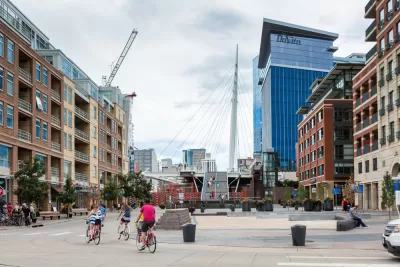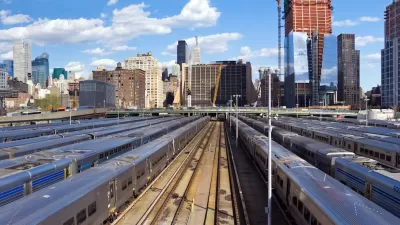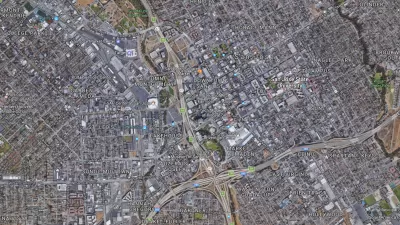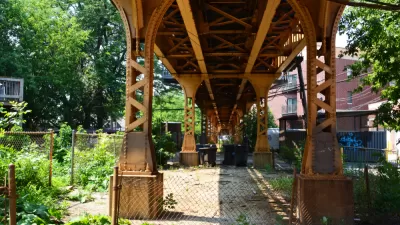Low-income residents are more likely to use transit, and transit needs riders. The relationship seems ripe for mutual benefit.

Eleni Bardaka, an assistant professor at North Carolina State University, and John Hersey, a senior TOD associate of the Regional Transportation District (RTD) in Denver, write a guest post for Transit Center to share survey research exploring the travel habits of people who live near transit.
"Bardaka and Hersey’s work confirms that low-income housing residents use transit a lot more than market-rate residents, reinforcing the case for affordability in transit-oriented developments," according the introductory text supplementing the guest post.
In the words of Bardaka and Hersey:
Transit systems provide users with a ladder to economic opportunity, connecting individuals to home, work, education, healthcare, and myriad metropolitan destinations. This ladder is most critical to low-income, transit-reliant households with little means to afford auto-oriented lifestyles.
The need to state these housing and mobility facts becomes more and more pressing as more and more transit-rich cities become homogeneously affluent cities, according to the article.
Without equitable planning and policies in place, major transit investment can generate new demand for development in areas that quickly transition from economic afterthoughts to high-end enclaves of housing, retail, and offices catering to higher-income earners while leaving behind low-income households who could most benefit from improved transit access. Transit agencies may then find themselves the victims of their own expansion, setting in motion a speculative real estate market that delivers high-rent land uses but few new transit riders.
For a model of equitable planning—rather than the model of gentrifying, ridership depleting transit oriented development—the article looks to Denver's eTOD effort that relies on a variety of private and public sector partners and already has a proof of concept in a development at the 38th and Blake Station on the RTD system.
Hat tip to Angie Schmitt for sharing the article.
Previous Planetizen articles on similar subjects:
FULL STORY: Transit-Oriented Development is More Transit-Oriented When It’s Affordable Housing

Alabama: Trump Terminates Settlements for Black Communities Harmed By Raw Sewage
Trump deemed the landmark civil rights agreement “illegal DEI and environmental justice policy.”

Planetizen Federal Action Tracker
A weekly monitor of how Trump’s orders and actions are impacting planners and planning in America.

The 120 Year Old Tiny Home Villages That Sheltered San Francisco’s Earthquake Refugees
More than a century ago, San Francisco mobilized to house thousands of residents displaced by the 1906 earthquake. Could their strategy offer a model for the present?

In Both Crashes and Crime, Public Transportation is Far Safer than Driving
Contrary to popular assumptions, public transportation has far lower crash and crime rates than automobile travel. For safer communities, improve and encourage transit travel.

Report: Zoning Reforms Should Complement Nashville’s Ambitious Transit Plan
Without reform, restrictive zoning codes will limit the impact of the city’s planned transit expansion and could exclude some of the residents who depend on transit the most.

Judge Orders Release of Frozen IRA, IIJA Funding
The decision is a victory for environmental groups who charged that freezing funds for critical infrastructure and disaster response programs caused “real and irreparable harm” to communities.
Urban Design for Planners 1: Software Tools
This six-course series explores essential urban design concepts using open source software and equips planners with the tools they need to participate fully in the urban design process.
Planning for Universal Design
Learn the tools for implementing Universal Design in planning regulations.
Clanton & Associates, Inc.
Jessamine County Fiscal Court
Institute for Housing and Urban Development Studies (IHS)
City of Grandview
Harvard GSD Executive Education
Toledo-Lucas County Plan Commissions
Salt Lake City
NYU Wagner Graduate School of Public Service





























